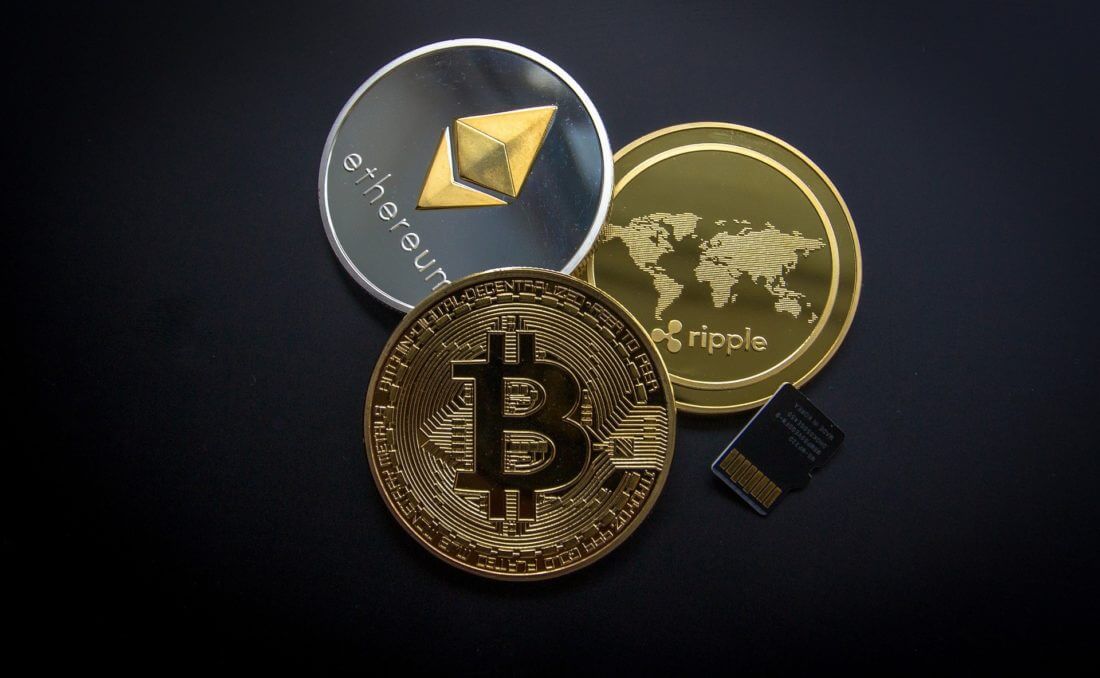It’s important not to confuse cryptocurrencies with the terms “tokens” and “coins” as they have specific differences that distinguish them from one another.
While they share the premise of exchanging value between parties, cryptos have differences that traders and investors like you need always to remember.
Cryptocurrencies Today
Since the inception of Bitcoin in 2009, there are now about 21,910 cryptocurrencies in existence, with a combined market cap of $850 billion.
It was in 2011 that Bitcoin’s original alternatives, known as altcoins, were introduced. Such altcoins included Litecoin and Namecoin, although it was not until Ethereum’s appearance that they caught many’s attention and interest.
Certain cryptos, such as Bitcoin, function as investment vehicles, with many investors seeing them as a store of value. On the other hand, other cryptocurrencies, like Ether, have a more transactional purpose that allows developers to create different transactional tools, services, and communities.
Understanding Crypto Coins and Crypto Tokens
While crypto has been interchanged with the terms “coin” and “token,” they are different from one another.
Coins are Bitcoin and altcoins like Ethereum that operate their own blockchain networks. When people think of cryptocurrency, it is often crypto coins such as Bitcoin.
Crypto coins are typically implemented on and native to their blockchains, working mainly as payment cryptocurrencies. They are a different type of crypto from tokens, which are created on existing blockchains.
Crypto tokens can represent a digital asset, like digital art or utility, that provides the owner access to a particular service or application. Compared to coins, tokens are digital units of value that don’t need a blockchain and can reside in the ecosystem of another blockchain network.
Three Types of Crypto Tokens
- Value Tokens:These are objects of value representing digital assets such as art or music through a non-fungible token (NFT).
- Utility Tokens:Tokens that have specific use cases. They allow holders to carry out actions on a blockchain or decentralized application (dApp).
- Security Tokens:These tokens are like stocks, representing ownership of a financial security. Securities tokens, regulated by the Securities and Exchange Commission (SEC), can be sold by companies to generate capital. They are also fungible, making them different from value tokens and NFTs.
ERC-20 Tokens Explained
Ethereum Request for Comment 20 or ERC-20 tokens are widely used tokens on the Ethereum network. Such tokens include stablecoin DAI and meme coin Shiba Inu (SHIB).
Certain token standards are applied in creating crypto tokens, and the ERC-20 is one of the most common.
The ERC-20 is a standard that allows the development of fungible tokens and smart contracts in the Ethereum blockchain. It is a technical standard that provides developers with the rules they need to follow to enable a token’s interoperation within Ethereum’s network.
Altcoins Explained
Altcoins initially referred to anything that is not Bitcoin, although its definition has long since changed.
The cryptocurrency world has expanded significantly, with a range of coins and tokens serving different purposes besides helping facilitate exchange. However, not all of them are intended to rival Bitcoin.
Today, smart contracts originator Ethereum is the largest altcoin on the crypto market, with a market cap of $155 billion to Bitcoin’s $423 billion. Other well-known altcoins include Ripple, Tether, Solana, and Cardano.
Altcoins are more than just digital currencies, as they have other use cases, while Bitcoin is designed to function as a decentralized currency. For example, Ethereum is a computing network that allows users to operate dApps on the blockchain and host smart contracts.
Stablecoins Explained
A stablecoin is a type of cryptocurrency with a value pegged or tied to a currency, commodity, or other financial instruments. If it works correctly, the stablecoin’s value pegged to the US dollar should be $1.
While there are several types of stablecoins, the common ones include collateralized and algorithmic stablecoins.
Collateralized Stablecoins
Collateralized stablecoins are wholly or nearly backed by a pool of collateral kept in reserve. When an investor sells their tokens, the same amount of collateral is withdrawn from the coin’s reserves.
Tether, which holds a value relative to the greenback, is perhaps the most popular stablecoin, although there is some uncertainty around its reserves’ reliability.
Algorithmic Stablecoins
As the name suggests, an algorithmic stablecoin uses an algorithm to control its supply and therefore maintain a consistent value. The TerraUSD is a famous example of this.
The TerraUSD is pegged initially at $1 by making and destroying its sister coin Luna. Each time investors buy or sell TerraUSD, an equal amount of Luna is made or destroyed.
That tactic worked for quite some time until panic hit the market, prompting investors to turn a profit from their TerraUSD holdings in a massive retreat. The stablecoin was then de-pegged from $1 and almost declined to zero together with its sister coin.
The same panic also pushed the Tether’s price down to $0.94 per coin from $1.
Meme Coins Explained
Meme coins are what provide the cryptocurrency world with a sense of humor. These coins grew significantly popular through viral internet memes and social media. Meme coins can also refer to coins that gained traction on social media.
Dogecoin became the pioneer of meme coins, which was branded around the famous “doge” meme that features the Japanese shiba inu dog Kabosu.
Founded in 2013 by software engineers Jackson Plamer and Billy Markus, Dogecoin was created as a lighthearted joke, with the idea being to have fun with a low-priced cryptocurrency. However, the meme-inspired digital currency proved its worth as it generated tremendous interest and investments.
As a result, Dogecoin became one of the world’s largest crypto and paved the way for creating more meme coins.
Since Dogecoin’s launch, over 200 meme coins have been introduced, with the Shiba Inu coin also being one of the most traded and trending meme coins.
Still, while conceptualizing meme coins can be an enjoyable experience, their prices are highly volatile and speculative. Therefore caution is still needed when venturing into the meme coin territory.
Important Note
Cryptocurrencies represent a significant technological and financial innovation, and more are being started. That said, it’s essential to keep in mind that investing in them is risky as their value can undergo constant and dramatic change.
You should only invest money you’re willing to lose with regulated companies and institutions.










